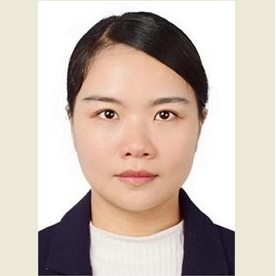Development of Ultrasound Techniques for Cardiovascular Disease Assessment and Monitoring
A special issue of Bioengineering (ISSN 2306-5354). This special issue belongs to the section "Biosignal Processing".
Deadline for manuscript submissions: closed (31 December 2023) | Viewed by 1543
Special Issue Editors
Interests: ultrasound Imaging; image processing; 3D imaging; segmentation; biomarkers
Special Issue Information
Dear Colleagues,
Atherosclerosis is the underlying mechanism contributing to vascular diseases. The recent developments of ultrasound imaging techniques has allowed for a direct visualization and quantification of the vessel wall and plaque. Vascular measurements include the intima-media thickness, vessel wall and plaque thickness, and volume and textural features. As atherosclerosis is a focal disease which predominantly occurs at bends and bifurcations, biomarkers based on the distribution of the vessel wall and plaque thickness and volume measured from 3D ultrasound images have been developed for a sensitive detection of the effects of new dietary and medical therapies.
Machine learning plays an important role in making measurements more efficient and reproducible. Techniques have been developed for segmentation of the carotid vessel wall and plaques, automated classification for identifying vulnerable plaques, and the generation of biomarkers that are sensitive to the effects of medical/dietary treatments and accurate in stroke risk stratification. These techniques have great potential in making the assessment of arterial wall changes more efficient and accurate.
We are seeking contributions presenting:
(1) The instrumentation of novel non-invasive ultrasound imaging techniques;
(2) Machine learning methods that can accelerate measurements of atherosclerotic burden and allow for an efficient plaque characterization from ultrasound images;
(3) The development of novel biomarkers that allow for accurate stroke risk stratification, the sensitive monitoring of patients treated for atherosclerosis, and the sensitive detection of treatment effects of new anti-atherosclerotic treatments;
(4) Techniques for carotid plaque tissue characterization and classification, and the prediction of cardiovascular and stroke from carotid ultrasound images.
Dr. Bernard Chiu
Dr. Ran Zhou
Guest Editors
Manuscript Submission Information
Manuscripts should be submitted online at www.mdpi.com by registering and logging in to this website. Once you are registered, click here to go to the submission form. Manuscripts can be submitted until the deadline. All submissions that pass pre-check are peer-reviewed. Accepted papers will be published continuously in the journal (as soon as accepted) and will be listed together on the special issue website. Research articles, review articles as well as short communications are invited. For planned papers, a title and short abstract (about 100 words) can be sent to the Editorial Office for announcement on this website.
Submitted manuscripts should not have been published previously, nor be under consideration for publication elsewhere (except conference proceedings papers). All manuscripts are thoroughly refereed through a single-blind peer-review process. A guide for authors and other relevant information for submission of manuscripts is available on the Instructions for Authors page. Bioengineering is an international peer-reviewed open access monthly journal published by MDPI.
Please visit the Instructions for Authors page before submitting a manuscript. The Article Processing Charge (APC) for publication in this open access journal is 2700 CHF (Swiss Francs). Submitted papers should be well formatted and use good English. Authors may use MDPI's English editing service prior to publication or during author revisions.
Keywords
- ultrasound imaging
- atherosclerosis
- biomarkers
- risk stratification
- treatment effect evaluation
- vessel wall and plaque segmentation







